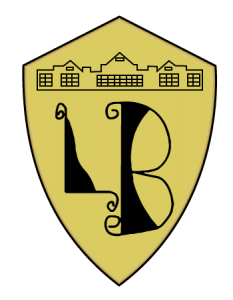Art Overview 2021-2022
| Autumn | Spring | Summer |
| EYFS – Expressive Arts and Design |
Birth to three – babies, toddlers and young children will be learning to: · Notice patterns with strong contrasts and be attracted by patterns resembling the human face. · Start to make marks intentionally. · Explore paint, using fingers and other parts of their bodies as well as brushes and other tools. · Express ideas and feelings through making marks, and sometimes give a meaning to the marks they make. · Explore different materials, using all their senses to investigate them. · Manipulate and play with different materials. · Use their imagination as they consider what they can do with different materials. · Make simple models which express their ideas. 3 and 4-year-olds will be learning to: · Create closed shapes with continuous lines and begin to use these shapes to represent objects. · Draw with increasing complexity and detail, such as representing a face with a circle and including details. · Use drawing to represent ideas like movement or loud noises. · Show different emotions in their drawings and paintings, like happiness, sadness, fear, etc. · Explore colour and colour mixing. · Show different emotions in their drawings – happiness, sadness, fear, etc. Children in Reception will be learning to: · Explore, use and refine a variety of artistic effects to express their ideas and feelings. · Return to and build on their previous learning, refining ideas and developing their ability to represent them. · Create collaboratively, sharing ideas, resources and skills. |
| Nursery | Offered as part of continuous provision weekly and with links to physical / motor development. Weekly focused tasks. Follows children’s interests. |
| Reception As nursery, plus the following… | Self portraits Primary colours Transient art – to mark occasions (e.g. Remembrance Day – using poppies) Christmas crafts | Still drawings E.g. Valentine’s Day – flowers in a vase. | Kadinsky (circles) Colour mixing – building from primary to secondary colours |
Key stage 1 Pupils should be taught: · to use a range of materials creatively to design and make products · to use drawing, painting and sculpture to develop and share their ideas, experiences and imagination · to develop a wide range of art and design techniques in using colour, pattern, texture, line, shape, form and space about the work of a range of artists, craft makers and designers, describing the differences and similarities between different practices and disciplines, and making links to their own work. |
| Year 1 | Jackson Pollock Primary colour mixing to produce secondary colours. Exploring brush strokes. Creating texture Using print techniques Christmas crafts including using paints to create 4 seasons tree picture. | Jasper Johns 0 through 9 – Examples of this work Chn to create their own version. Look at other pop artists and their work (Andy Warhol) | African Art Colours, shapes and pattern Maasai Jewellery and Culture African Masks African sunsets African Water Jars |
| Year 2 | Colour mixing Polytile printing – children to create own wrapping paper as part of Christmas crafts. Keith Haring Children to study artist and create a piece of work in the style of said artist (calendars) Christmas Crafts | Great Fire of London Pupils will study impressionist artists and create artwork depicting the Great Fire of London in the impressionist style. Henri Rousseau Colour mixing – Tonal changes through the use of colour, pattern, texture, line and shape. Sketch leaves Create a collage in the style of Henri Rousseau using a range of techniques and materials. | Local Area Study Sculpture – Weebles (linked to local area study – South Shields) – children to go on a local area visit to South Shields to observe the ‘weebles’ sculpted by Juan Munoz Portraits – Linked to line and form. |
| Key stage 2 • Pupils should be taught to develop their techniques, including their control and their use of materials, with creativity, experimentation and an increasing awareness of different kinds of art, craft and design. • Pupils should be taught: to create sketch books to record their observations and use them to review and revisit ideas to improve their mastery of art and design techniques, including drawing, painting and sculpture with a range of materials [for example, pencil, charcoal, paint, clay] about great artists, architects and designers in history. |
| Year 3 | Stone Age Painting techniques Painting silhouettes of Stonehenge Cave paintings Stonehenge models Christmas crafts | The Egyptians Cartouches Death masks Making pyramids | Local Area study Antony Gormley (Sculptor Angel of the North) Artist study Van Gough/L.S Lowry |
| Year 4 | Linked to topic of Romans Roman mosaic, Artefacts (half pictures – pastel) Celtic symmetry patterns Roman jewellery (e.g. brooches, necklaces – pasta, card, clay etc.) Roman shields Krindlekrax paintings, wooden spoon puppets, Christmas crafts | Linked to topic of Europe and the United Kingdom European artists (e.g. Monet, Van Gogh) European flags Easter crafts/Mother’s Day cards | Linked to topic of Ancient Greece Greek artwork – Gods, Comedy and tragedy masks, Greece fact files using brochures. Greek recipes Greek Parthenon Papier mache Greek pots (orange and black) Greek Plates Father’s Day cards. |
| Year 5 | Artist study Georges Seurat – Pointillism Pupils to study artist and create a piece of work in the style of said artist. Christmas crafts | Anglo-Saxons and Vikings Salt dough models – Viking ruins. | South America Mayan Masks Murals |
| Year 6 | WW2 Blitz pictures Anderson Shelters Make do and mend activities – fabric dolls (DT) Christmas crafts | The Americas Art from across the continent Leonardo Da Vinci compare works of this artist to that of those studied from The Americas. | Rivers / Coastal Areas Choose an artist(s) for artist study. Art around the theme of water. e.g. -David Hockney -Zaria Foreman -William Turner (J.M.W Turner) |

